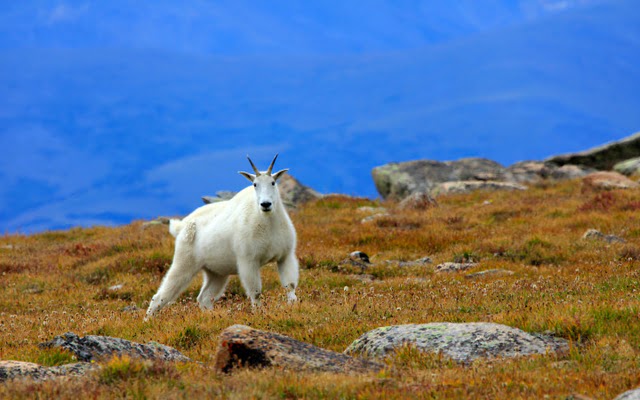Quck answer
Tundra can be found in the Arctic regions of North America, Europe, and Asia. It is characterized by extremely cold temperatures, a short growing season, and a layer of permafrost. The largest areas of tundra can be found in Alaska, Canada, and Russia. Tundra is also found in smaller patches in Scandinavia and parts of Greenland. Due to its harsh conditions, the tundra is sparsely populated by humans, but it is home to a variety of unique plant and animal species that have adapted to survive in this challenging environment.

What is the terrain like in your area? Are there warm, grassy plains? Dense forests? Tall mountains? Perhaps tropical jungles?
Or do you reside in a cold, harsh, treeless climate? If that’s the case, you may live on or near the tundra. Tundra regions are some of the most challenging places in the world to live and survive.
Tundra lands have extremely cold, windy, and dry climates. They are predominantly devoid of trees, as very few plants can thrive in their cold temperatures and short growing seasons. The average temperature in tundra regions ranges from as low as -50° F in the winter to as high as 10-20° F in the summer. The vegetation on the tundra primarily consists of small shrubs, grasses, mosses, and lichens.
There are three main types of tundra lands, depending on their location. Arctic tundra is found near the Arctic Circle and includes the northernmost parts of Russia and Canada. Alpine tundra regions can be found in areas of the world with tall mountain ranges. Antarctic tundra can be found in Antarctica.
For most of the year, tundra lands are covered in snow. In fact, tundra lands have a layer called permafrost, which is composed of frozen soil and dead plants that can extend over 1,000 feet below the surface. This layer remains frozen throughout the year.
In some warmer regions, however, the top layer of tundra may melt during the summer. When this happens, bogs and small lakes form, attracting various wildlife. Wildflowers may also bloom, temporarily transforming the frozen tundra into a beautiful landscape.
These temporary wetland areas also draw insects, which in turn attract migratory birds. There are also several other animals that call the tundra their home. Some common tundra animals include mountain goats, Arctic foxes, polar bears, gray wolves, caribou, and musk oxen. These animals have usually developed special adaptations to survive in the cold, dry tundra conditions.
As challenging as it is for plants and animals to survive in the tundra, it is even more difficult for human beings. There are very few people who live on or near the tundra. Some indigenous peoples in Arctic regions may hunt on the tundra. Additionally, mineral resources like oil and ores have been discovered in the tundra, but the tundra’s climate often makes it too challenging to locate and extract these resources.
Give It a Try
Interested in teaching your friends and family more about the tundra? If you have a shoebox, some dirt, and a few other easily obtainable supplies, you can create your own homemade tundra project at home.
For a complete list of materials you’ll need and detailed instructions, simply go online and check out How to Make a Tundra Project. You may need an adult’s assistance, so don’t hesitate to ask for help if needed.
Once you’ve completed your project, share a photo of it on Facebook. We are excited to see how it turns out!
FAQ
1. Where can you find tundra?
Tundra is a type of biome that can be found in the northernmost regions of the Earth, mainly in the Arctic and subarctic regions. It stretches across regions such as Alaska, Canada, Siberia, and Scandinavia. Tundra can also be found in high mountain ranges, such as the Himalayas and the Andes. These areas have extremely cold temperatures and a short growing season, making it difficult for trees to grow.
2. Are there any tundra regions in the southern hemisphere?
No, tundra regions are primarily found in the northern hemisphere. The southern hemisphere does not have the same geographic conditions that are necessary for the formation of tundra. The southernmost regions of the Earth, such as Antarctica, have a different type of cold climate known as the polar desert, which is characterized by extremely low temperatures and very little precipitation.
3. Can tundra be found in any other parts of the world?
While tundra is mainly found in the Arctic and subarctic regions, there are some isolated tundra regions in other parts of the world. For example, there are small tundra patches in the high mountain ranges of Europe, such as the Alps and the Pyrenees. These areas have similar climatic conditions to the Arctic tundra, with cold temperatures and a short growing season.
4. Why is tundra vegetation limited?
Tundra vegetation is limited due to the harsh environmental conditions of the region. The cold temperatures and permafrost (permanently frozen ground) make it difficult for plants to establish deep root systems. The short growing season also restricts plant growth. However, despite these limitations, tundra vegetation consists of hardy plants such as mosses, lichens, and low-growing shrubs that have adapted to survive in this challenging environment.





Leave a Reply